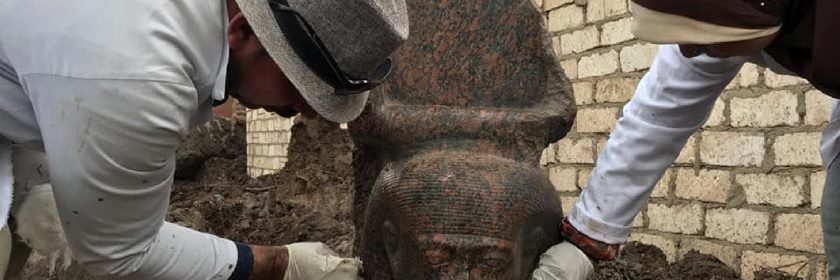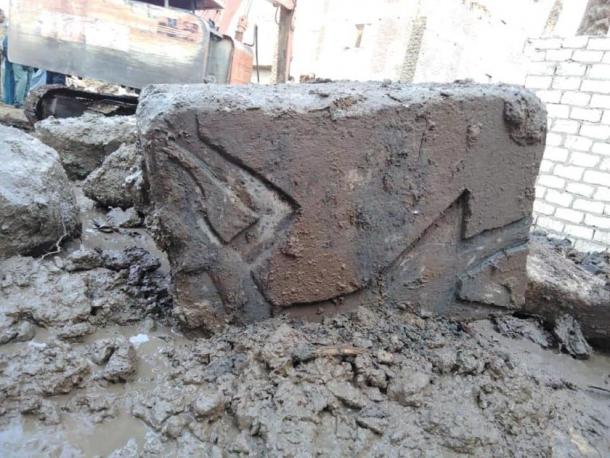RED GRANITE BUST OF RAMESSES II UNEARTHED IN GIZA

A historic discovery has been announced by the Egyptian Supreme Antiquities Council. Ramses II has been discovered as a very rare pink or rose granite statue of one of the greatest pharaohs.
What makes the discovery noteworthy is that it bears an unique symbol of the life-force or soul of the pharaoh, the first time that this symbol was seen on a statue in Egypt.
The important discovery was made by chance and in the wake of an illegal excavation. In his home in Mit Rahina Village near to the Pyramids at Giza, west of Cairo, a 62-year old man decided to dig artifacts.
It has been excavated without permission, but such private excavations violate the law because, according to the Cairo Scene, “there is an increased risk of irreparable damage to artifacts and also the danger of smuggling the documents.”
Thankfully, the authorities interfered and decided to continue his excavation while they stopped the man. They made a series of incredible discoveries for their amazement.

They unearthed a previously unknown temple dedicated to Ptah, the Egyptian God of craft-persons, builders and fertility. According to the Cairo Scene ‘in the city of Memphis, he was revered as the Master of Men’.
The archaeologists also unearthed the statue of the mighty monarch that was made out of rare rose or pink granite. Only the upper part has been found intact and the rest is in fragments.

Newsweek quotes Moustafa Waziri, Secretary-General of the Council of Antiquities as stating that the statue is of Ramses II is in the ‘Elka’ pose, which is a ‘symbol of strength, vitality, and spirit’.
The likeness of Ramses is wearing a wig and a large crown. The experts were able to positively identify that the statue was of the pharaoh, as an engraving of Nakht Mari Matt, an epitaph associated with Ramses, which means strong bull, was found engraved onto the back of the statue. The part of the statue, that is intact is 3.1 feet (1.05m) tall and a foot and a half wide (45cm).
Ramses II ruled Egypt between 1279 and 1213 BC and reigned until he was 90. This pharaoh is often regarded as the greatest monarch in the New Kingdom and is known by the epithet Ramses the Great.

Archaeologists also found engravings of the pharaoh celebrating the ritual of Heb Sed. This was a lavish ceremony to mark the 30 th jubilee of his rule.

During an examination of the statue, archaeologists found a symbol signifying ‘Ka’. The Ka was believed to represent the soul or spirit of a person, in this case, Ramses II, in Egyptian cosmology.
It was bestowed on a person at birth and was believed to exist after their physical death.